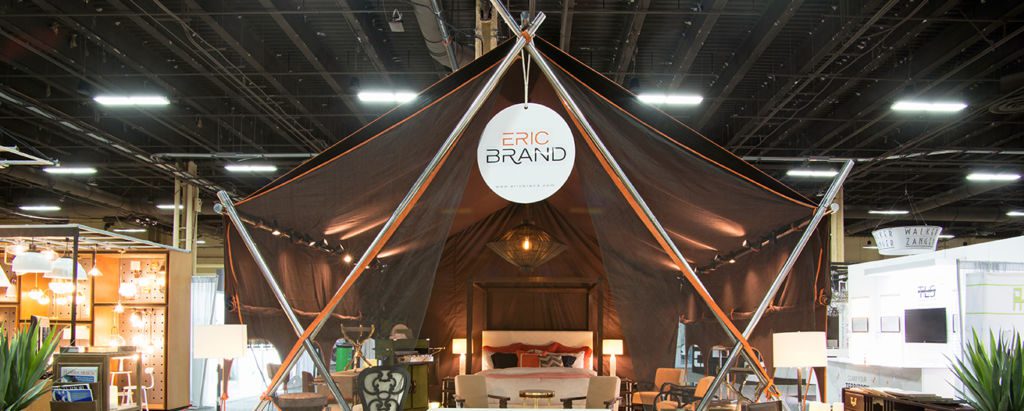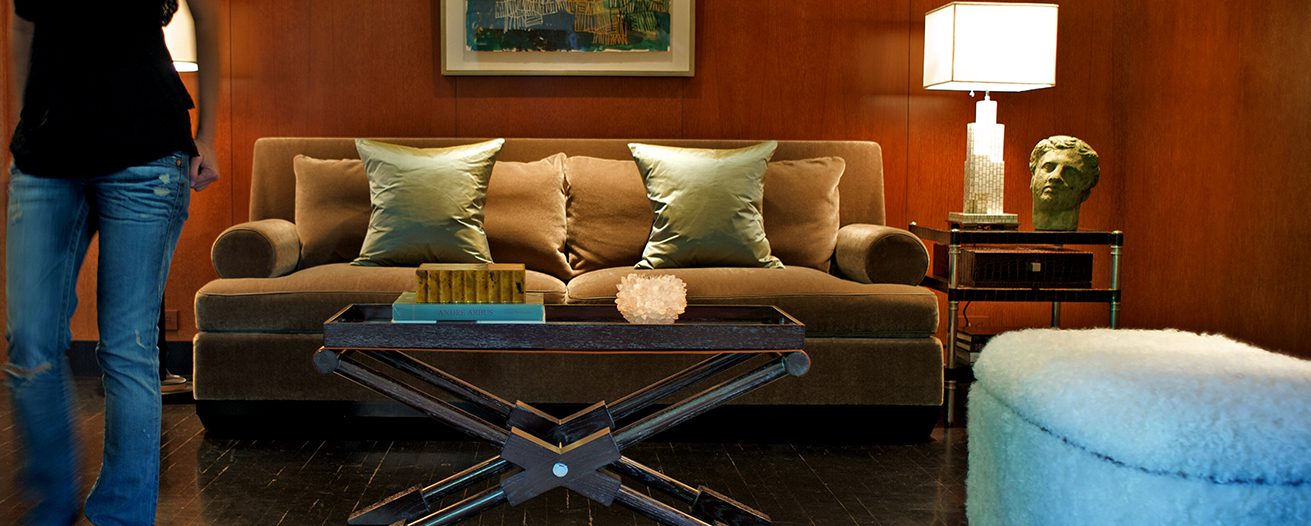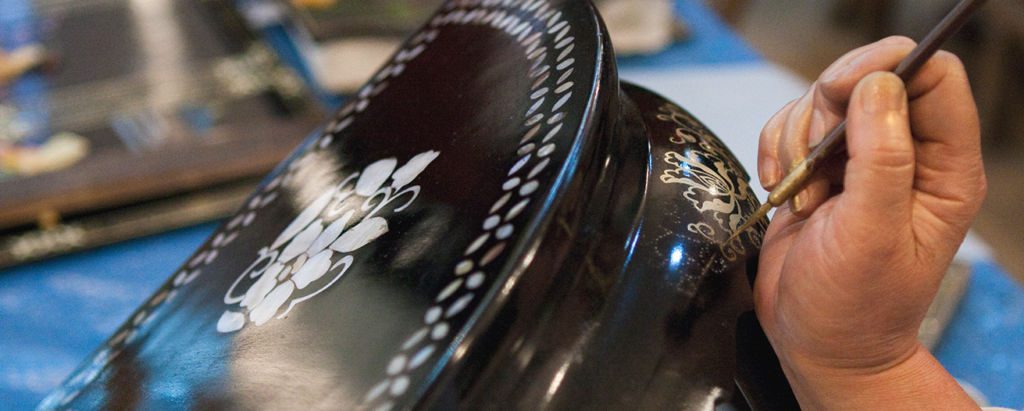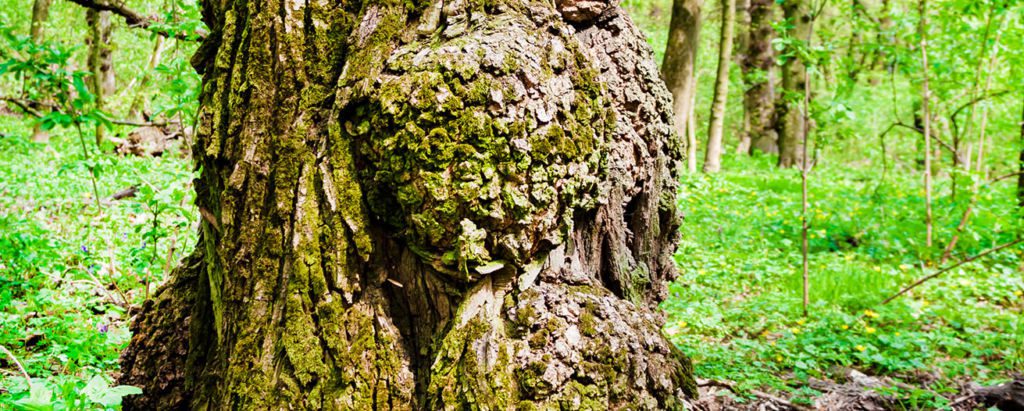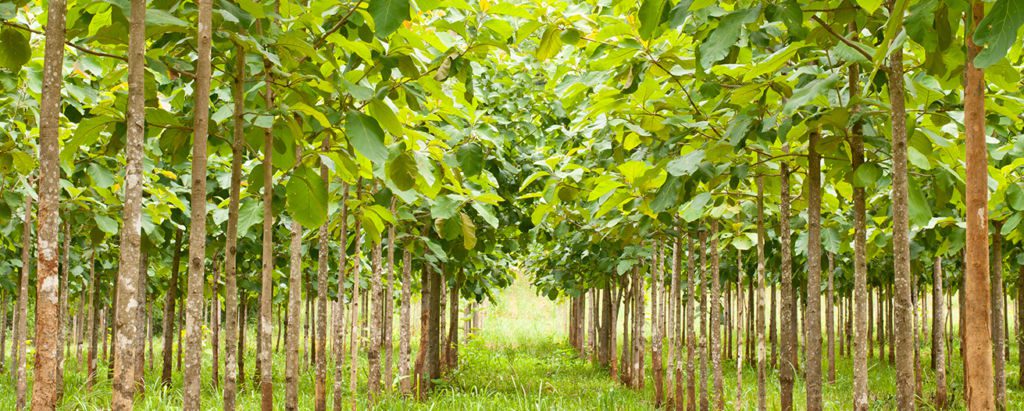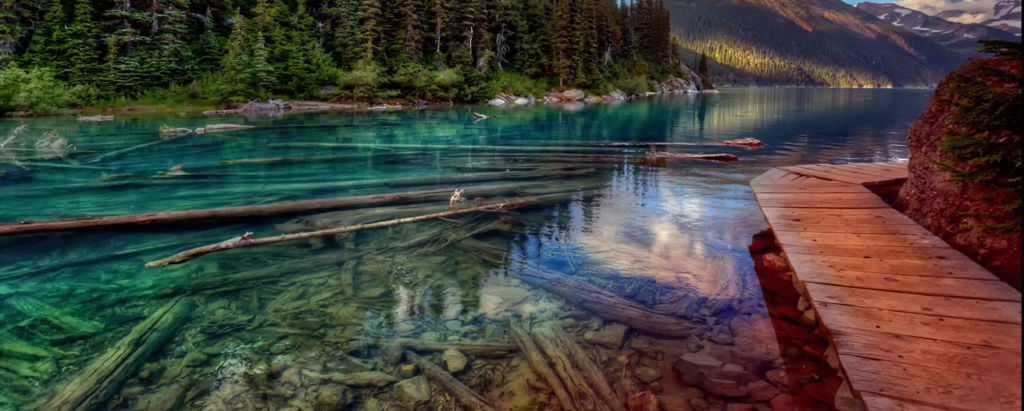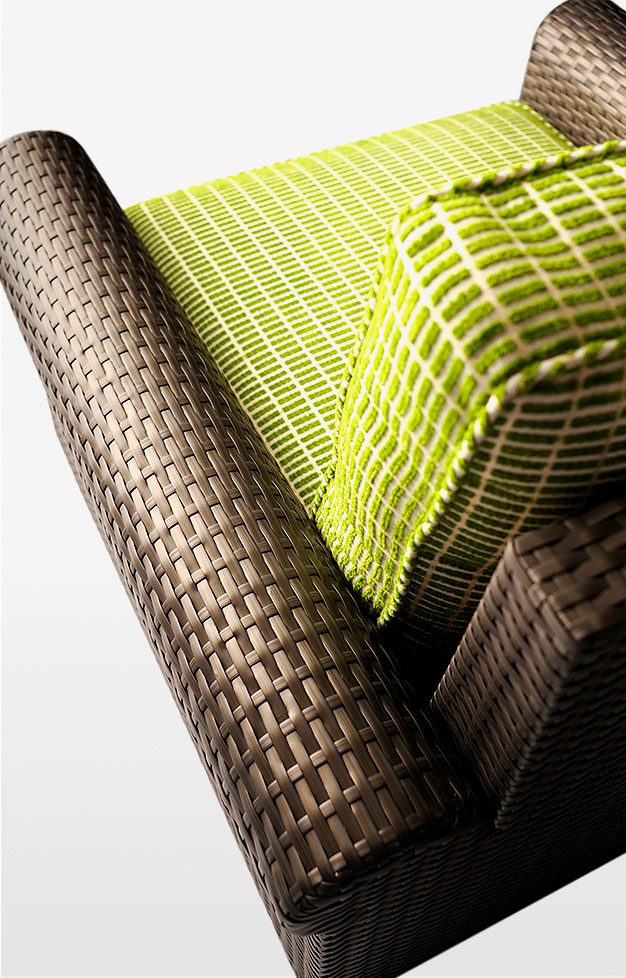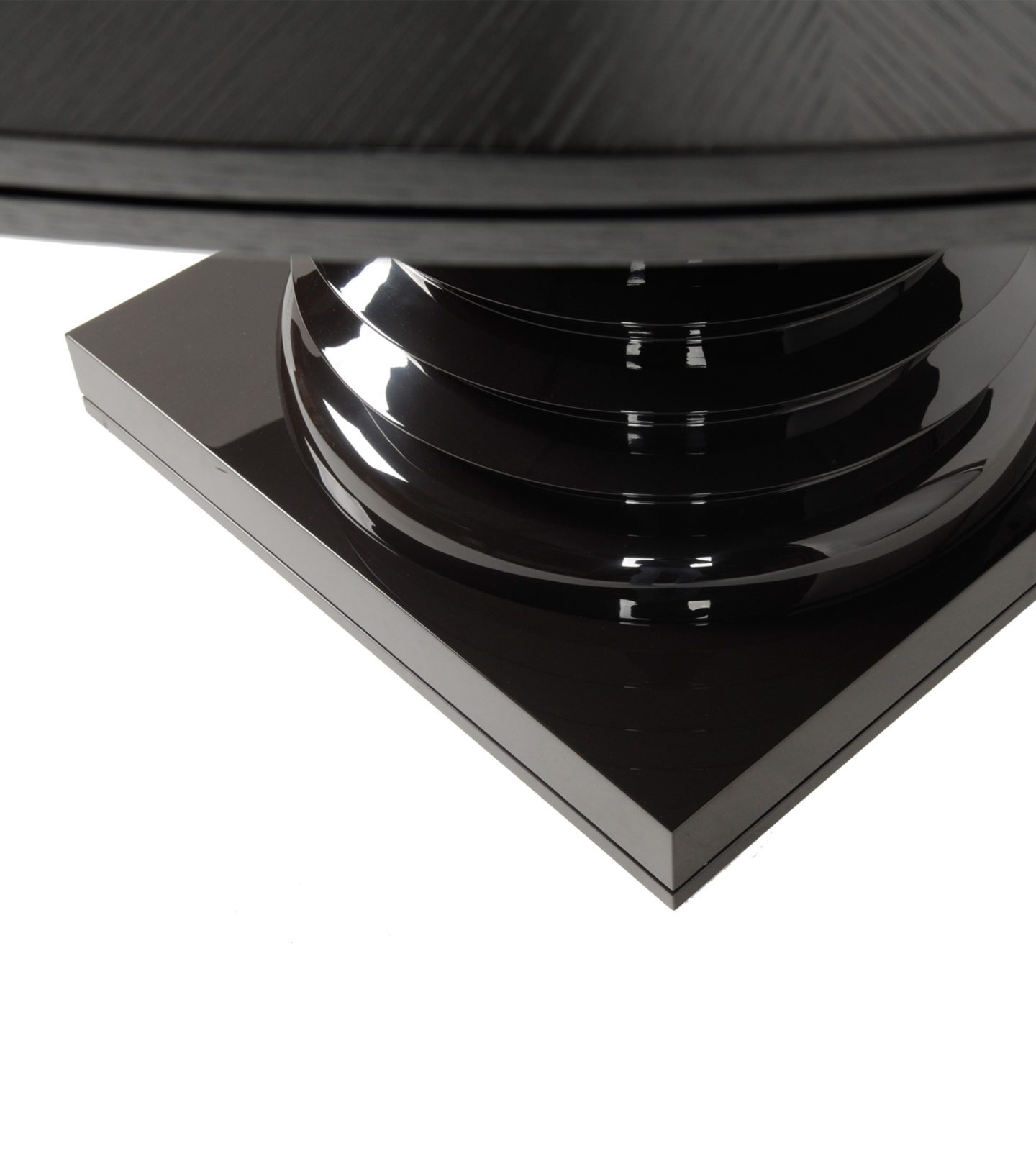So, you are heading out to the woods, to give your kids a Back-To-Nature moment, pitching a tent and building a campfire. What do you need for this venture?
Most likely sleeping bags, air mattresses, a battery-operated lamp, and perhaps a couple of folding stools for the great outdoors. And don’t forget the marshmallows.
Or perhaps you are heading for a more upscale site – a cabin off the trail. In this case, you may progress to metal cots or bunk beds with very musty mattresses.
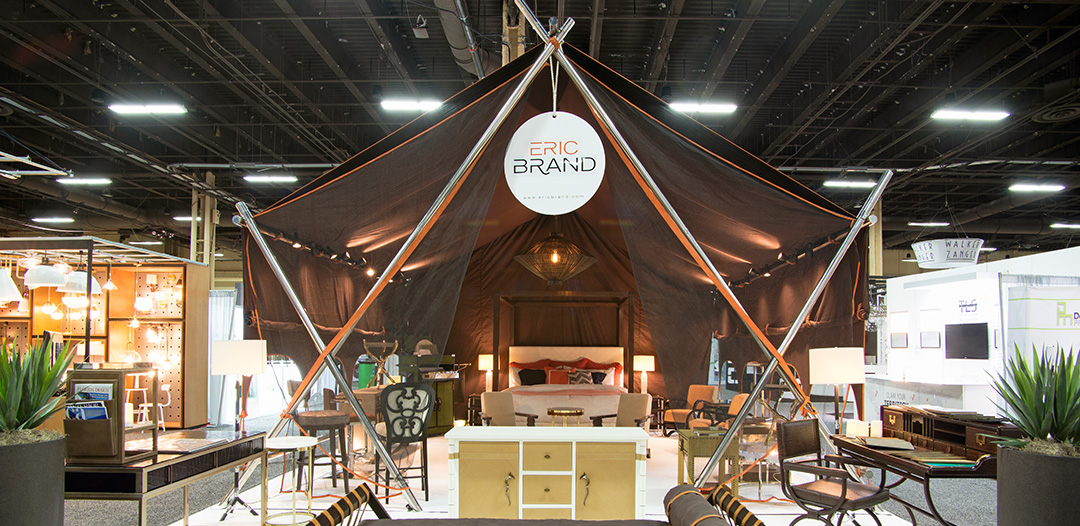
Throw in a couple of scratchy blankets, a simple wooden table and chairs, a wood-burning stove, and an old tea kettle.
However, if you are heading off on one of the quickest growing luxury trends of the past decade known as glamping, you are probably in store for something much more refined and sumptuous.
Camping is defined as sleeping or staying in a temporary shelter with minimal creature comforts, in the midst of nature. Adding a few mod-cons such as flush toilets and electricity may raise the bar slightly, but trailer parks and KOA sites can accomplish that.
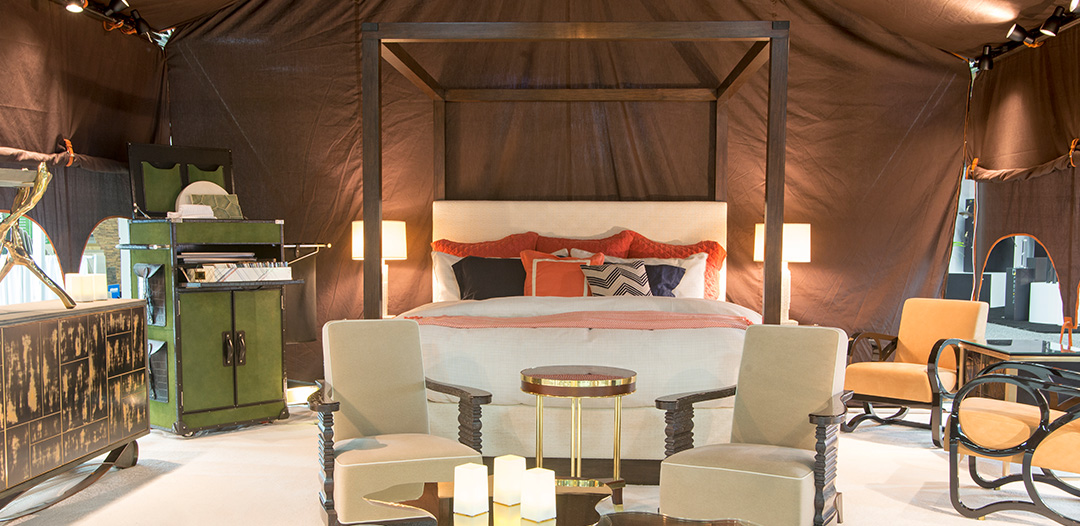
Glamorous camping – the origin of the term glamping – goes one, or six, or 26 levels beyond. The destinations are usually eco-friendly, sustainable, and luxe. They are in remote, exotic locations that come with a hefty price tag. They appeal to the socially conscious A-listers that want a unique, natural experience, but one in which their designer handbags fit right in. Four-star dining on local delicacies is also de rigueur.
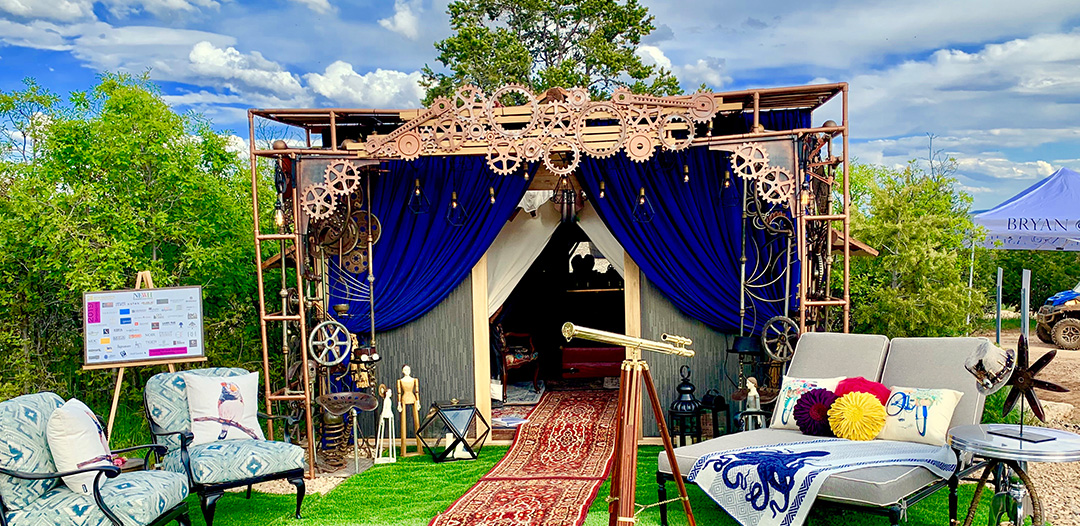
Without a doubt, the common factor that elevates these destinations is furnishing and décor. Sleeping in a tent is exciting and special. Sleeping in a tent on a bed draped in glorious linens, surrounded by local art after steeping in an essential oil-infused tub is magnificent.
The décor will be indigenous to the location and natural in substance.
Glamping while on safari in a southern African game park may involve animal skin throw rugs, zebra upholstered chairs, candlesticks, and picture frames made from bone and horns. The colors will be subtle hues of beige and gray and umbers.
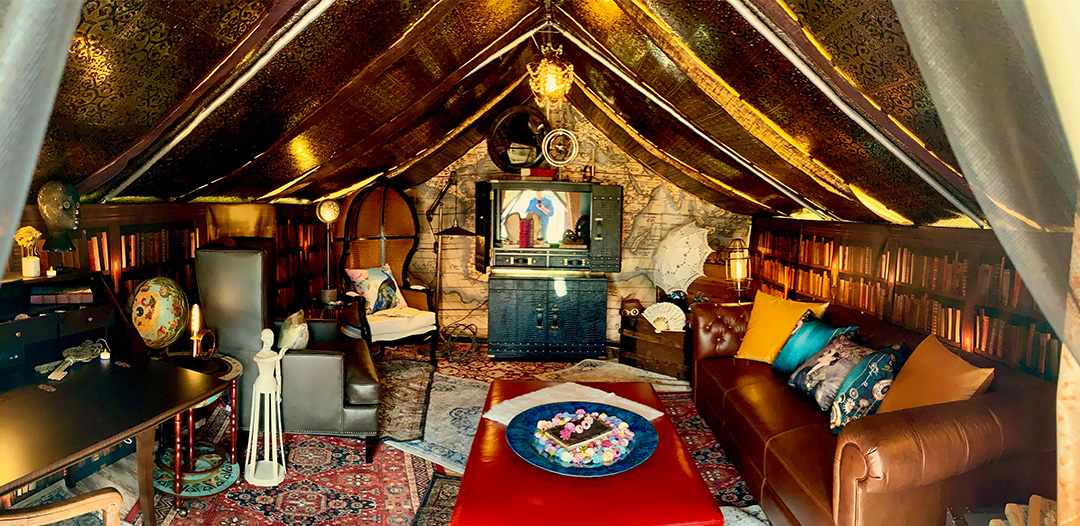
A stay in a screened-in A-frame on a beach in Madagascar or the Caribbean will likely be much brighter in tone. A daybed crafted from driftwood would be swathed in brilliant cotton textiles and an arm’s reach away from a palm woven basket filled with luscious tropical fruit.
There will probably be a woven hammock in your rainforest treehouse, accompanied by a slow circulating ceiling fan overhead and definitely something with opalescent feathers. Whereas your tipi in the desert will be handwoven textiles wrapped around the unfinished timbers that give it its shape. Pieces fashioned from silver and turquoise will punctuate the space.
Glamping provides an experience meant to embrace and elevate your senses through nature’s bounty and our finest creature comforts. The memories garnered will likely last for years.
Marketing gurus have latched onto the term glamping and apply it to experiences not quite as exclusive as the destinations described above. A quick internet search will turn up dozens of “glamping” destinations that lie somewhere between the pup tent and the outfitted yurt, particularly in the US.
Adorable Airstream trailers decked out in mid-century nostalgia fall under the moniker, but this may be pushing the definitional boundaries to maximize the trend. Nonetheless, just looking at those era-perfect campers makes me want a monogrammed, gingham apron. You too?
